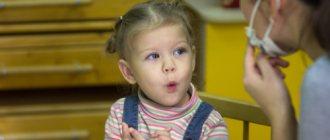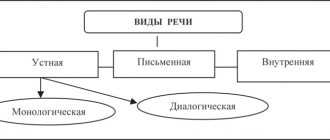Article:
Mental retardation is one of the most common childhood pathologies. About 50% of all low-achieving schoolchildren are diagnosed with this condition. Moreover, most of them study in regular general education schools, not correctional schools, despite the fact that they are not able to master the knowledge provided for in traditional programs. As a result, a lot of problems arise for teachers (how to teach) and parents (how to develop). In fact, mental retardation in children is not a death sentence at all. Competent and regular classes are a guarantee of successful psychocorrection work.
What it is
Mental retardation is a mental retardation when the basic cognitive functions (thinking, memory, attention, emotional-volitional sphere) in a child are not as well developed as those of peers and differ from the norms established for a given age. Diagnosed only in children of preschool age or primary school. If signs of the disease remain at the time of transition to secondary care, more serious diagnoses are made - for example, constitutional infantilism or mental retardation.
The term was proposed by the Soviet psychiatrist G. E. Sukhareva in 1959. Widely used in psychological, pedagogical and medical practice and literature. However, at the end of the 90s of the 20th century it was considered too generalized and already outdated, so the question of its replacement was raised. In 1997, this diagnosis was withdrawn from use by order of the Ministry of Health. They have been replaced by new concepts corresponding to codes F80–F89 and F90–F98 in ICD-10. These include all kinds of psychological development disorders (but no longer mental disorders):
- expressive and receptive speech disorders;
- hyperkinetic disorders;
- dyslexia;
- dyscalculia;
- dyspraxia;
- dysgraphia;
- behavioral disorders;
- phobias;
- tics;
- enuresis;
- encopresis;
- stuttering.
Since 1997, the term is not applicable as a medical diagnosis and is not opposed to mental disorders. However, this concept continues to be widely used in Russian-language psychological and pedagogical literature and Russian educational institutions.
Causes
All causes of mental retardation are divided into two large groups.
Biological
Pathologies and complications during pregnancy:
- if the mother suffered severe toxicosis, infection, intoxication, or injury during pregnancy;
- multiple births;
- intrauterine fetal hypoxia;
- prematurity;
- asphyxia;
- Rhesus conflict;
- incorrect presentation;
- birth injuries.
Infectious, toxic and traumatic diseases leading to perinatal encephalopathy in the first years of a baby’s life:
- nuclear jaundice;
- operations under anesthesia;
- fetal alcohol syndrome;
- cardiovascular pathologies;
- minimal brain dysfunction, organic brain damage, traumatic brain injury;
- congenital visual and hearing impairments;
- low mobility;
- asthenia;
- malnutrition, neuroinfections, influenza, rickets, hydrocephalus, vegetative-vascular dystonia, epilepsy.
Biological reasons also include genetics. There are cases when deviations of this kind are diagnosed from generation to generation.
Social
These include:
- long-term limitation of life activity;
- social deprivation;
- communication deficit;
- unfavorable upbringing conditions;
- mild mental disabilities in parents;
- psychotrauma.
Among the unfavorable conditions of upbringing that lead to mental retardation, there are three most common ones.
Neglect
A child to whom parents do not pay sufficient attention from early childhood, do not engage with him, do not develop him, grows up to be affectively labile, impulsive and suggestible. Does not learn basic rules of behavior and has no intellectual interests. Successful learning requires a basic understanding of the world around us. Reminds me of Mowgli who found himself in civilization. As a result, abnormal personality development is diagnosed as mental instability. But this is not the same as pedagogical neglect.
Overprotection
A child who, from early childhood, is given too much attention by anxious and suspicious parents and is raised as a little “god” of the family. He does not know how to overcome difficulties on his own, or adequately correlate desires and needs with the necessary efforts. There is no willpower. This leads to emotional lability, lack of initiative, self-centeredness, and dependence on adults. As a result, psychogenic infantilism is diagnosed.
Authoritarianism
A child who is suppressed by authoritarian parents from early childhood experiences their aggression, rudeness, cruelty, and despotism. Physical violence is often used. Against such an unfavorable background, obsessions, indecision, phobias, neuroses, increased levels of anxiety, and autism develop. This is an emotionally immature person who is not aimed at achieving success. As a result, learned helplessness syndrome is diagnosed.
How does ZPR differ from ZRR and ZPRR?
Delays in speech and psychospeech development (SRD and DSD) occur as a result of organic lesions of the brain and central nervous system. The reasons for the delay may be: illnesses suffered by the mother during pregnancy, fetal hypoxia, birth pathologies, chromosomal or genetic diseases, severe infections, congenital anomalies of the central nervous system, cerebral vascular pathologies, cerebral palsy, mental illnesses (epilepsy, etc.), tumors brain, etc.
For ZRR and ZPRR:
- intellectual impairments are secondary, and timely correctional work aimed at speech development gives positive dynamics in the normalization of intelligence;
- the lag is not synchronous - speech development lags behind much more than mental development;
- With timely diagnosis and competent correctional work with specialists and at home with parents, the child will be able to catch up with his peers by the senior preschool age.
For ZPR:
- Initially, it is the intellectual development that does not correspond to age, as a result - problems with speech formation;
- there are no specific speech errors, the level of speech development corresponds to the level of development of younger children;
- speech development is delayed as much as general mental development as a whole - synchrony is maintained;
- speech can develop spontaneously, just later than in peers. To correct secondary speech problems, sessions with a speech therapist may be required.
Clinical picture
Parents should be aware of the main symptoms of mental retardation characteristic of a particular age.
1 year
CPR is not diagnosed at 1 year of age. But a number of alarm bells may indicate a tendency towards it:
- Compared to his peers, the baby began to hold his head up, sit up, crawl, turn, stand up, walk, walk late;
- does not hold objects well;
- cannot coordinate movements;
- moves little;
- unemotional.
In this case, it is necessary to take into account the individual developmental characteristics of the baby and, if in doubt, consult a pediatrician or neurologist.
2 years
Deviations are indicated by:
- ignorance of one's own name;
- lack of response to the simplest questions;
- profuse drooling;
- sleep disorders;
- moodiness, tearfulness, irritability, aggression;
- difficulty maintaining attention on a specific subject.
3 years
- Poor vocabulary (no more than 20 words);
- speech defects;
- lack of basic understanding of the surrounding world (cannot name animals, household items, body parts);
- inability to formulate coherent speech;
- difficulty completing basic tasks;
- undeveloped imagination;
- uniformity of actions in the game;
- inability to concentrate;
- fast fatiguability;
- aggressiveness, hysteria.
4 years
At 4 years of age, mental retardation is already clearly diagnosed based on specific symptoms.
Physical:
- weak muscle tone;
- kinetosis;
- urinary disorders;
- headache;
- fatigue, weakness, lethargy, immobility.
Cognitive:
- inability to speak coherently;
- poor vocabulary;
- absent-minded attention;
- poor memory;
- inability to remember information visually or auditorily;
- lack of basic knowledge about the world;
- lack of formation of cognitive motivation.
Social:
- aggressiveness, distrust, wariness towards others;
- isolation, autism, self-absorption;
- reluctance to participate in joint games;
- infantilism;
- mood changes.
It is at the age of 4, with timely recognition of mental retardation, that corrective work must begin. In its absence, all these symptoms only increase and deepen at 5-6 years of age. Secondary signs appear: psychosomatic diseases and internal complexes develop, cognitive abilities deteriorate, and social maladaptation is observed.
At primary school age, mental retardation manifests itself more clearly. Such children differ from their peers in behavior and learning abilities. If parents and kindergarten teachers missed this moment and sent such a child to school, the teacher can no longer help but pay attention to this. He needs to master the minimum standard program, without which he cannot transfer such a student to another class. Therefore, at this stage, a medical-pedagogical commission is organized, a diagnosis is made and psycho-correctional work begins.
Characteristic
The psychological characteristics of a child with mental retardation are compiled according to those mental functions that are impaired in him.
Cognitive abilities
Thinking in children with mental retardation:
- normal level of development of visual and effective thinking;
- for the development of visual-figurative thinking, repeated repetition of the task is necessary;
- unformed skills to carry out analysis and synthesis operations;
- poorly formed verbal and logical thinking.
Correctional classes with children suffering from mental retardation should be aimed at developing thinking taking into account these features. They are able to classify objects according to one characteristic: color or shape, for example. The main thing is to eliminate distractions that significantly reduce performance, patiently repeat the task several times and rely primarily on visual-effective thinking, which is developed in them almost the same way as in their peers. In this regard, they have much better prospects for mastering the material when compared with those who have been diagnosed with mental retardation.
Memory in children with mental retardation:
- unstable;
- unproductive;
- involuntary prevails over voluntary;
- visual prevails over verbal;
- minimal self-control, lack of cognitive activity and motivation when learning and reproducing material;
- inability to use memorization techniques and organize memorization work;
- short-term memory is most affected;
- in the presence of interference, the memorization process practically stops;
- Material learned with great difficulty is quickly forgotten.
All of the above specific features of memory in children with mental retardation must be taken into account by teachers and psychologists when organizing classes and by parents when doing homework. The work should be structured in such a way that the support is involuntary and visual memory, and not voluntary and verbal.
Attention:
- scattered;
- weakened if information is presented verbally;
- unstable;
- reduction in parameters such as volume, selectivity, concentration and distribution.
Correction of attention is aimed at increasing volume and concentration. In classes, distribution and constant switching between different types of activities is necessary. Creative assignments are welcome.
Perception:
- superficial;
- slow process of formation of interanalyzer connections:
- deficits in auditory-visual-motor coordination;
- slow speed of building a single, integral image in a presentation.
Correction of perception is aimed at improving subject-research activities and mastering sensory standards. Games to improve coordination, spatial orientation and develop fine motor skills are welcome.
Speech:
- poor vocabulary;
- impaired sound pronunciation;
- unformed lexical and grammatical structure;
- problems with coherent speech;
- defects of the articulatory apparatus.
To develop speech, classes with a speech therapist are simply necessary. At home, parents need to read and talk more with their child. It is recommended to ensure that he constructs sentences correctly and that his speech is coherent.
Interpersonal communication
The process of interpersonal communication in children with mental retardation is difficult due to the inferiority of the prerequisites necessary for successful socialization:
- low cognitive motivation;
- insufficient speech activity;
- defective speech and mental activity;
- immaturity of many components of speech activity.
Therefore, interpersonal communication is characterized by the following features:
- episodic in nature (they are rarely included in games);
- working and playing alone;
- uncoordinated actions in pairs;
- role-playing game is not a joint activity, since there is practically no communication within it;
- inability to fully and clearly answer questions posed, formulate a question independently, speak out, listen to others, maintain a conversation;
- lack of attachment to anyone.
Children with mental retardation are much more willing to play with those who are younger in age. Often, against the background of failed interpersonal contacts, social phobia develops and serious problems with social adaptation arise.
Emotional-volitional sphere
In children with mental retardation, immaturity of the emotional-volitional sphere is observed. Its manifestations:
- emotional instability;
- lack of independence;
- lability;
- easy suggestibility;
- weakness of willpower;
- self-doubt, low self-esteem;
- causeless worry, increased level of anxiety;
- instant mood changes, contrasting emotions;
- inadequate cheerfulness, gaiety.
Children with mental retardation cannot correctly assess:
- situation: they react too aggressively to any failure and difficulties;
- emotional state of others: during the funeral they can laugh and have fun;
- own emotions.
This is interesting! Children with mental retardation, characterized by emotional immaturity, perfectly recognize emotions from facial expressions and pictures. Compared to their peers, they almost 100% find grimaces of anger, suffering and joy.
How does mental retardation manifest?
With developmental retardation, the following are delayed:
- all forms of thinking - comparison, abstraction, generalization, analysis and synthesis, mental activity is reduced;
- memory - visual material is better perceived, it is difficult to remember information by ear. The memory of children with mental retardation is poorly developed - they have difficulty remembering instructions, it is difficult for them to retell a text or repeat a task;
- perception - such children need much more time to process information than their peers. It is difficult for them to form an idea of the world around them, to imagine quantities (length, width, volume), they have a low level of orientation and research activity, spatial perception is reduced, they experience difficulties in forming a holistic image of an object;
- emotional-volitional sphere - characterized by infantilism, emotional instability, excitability, difficulties with organizing one’s activities;
- attention - it is difficult for a child to concentrate, concentrate, or listen to a question or task to the end. He interrupts, starts answering ahead of time, finds it difficult to sit still, is too “loud”, impulsive, impatient, uncollected. During lessons he is often distracted and perceives information partially (fragmented attention).
It is difficult for a child with mental retardation to navigate in space; he will not be able to find a thing if he does not initially know where it is, even if it is in the most visible place. It is also difficult for such children to identify an object by touch, remember what it looks like, and talk about it from memory.
With mental retardation, children often experience low speech activity and delayed speech development (ZRD, ZPRD). Their vocabulary is poor, does not correspond to age standards, phonemic hearing is poorly developed, speech is not formed, statements are primitive and unfocused, they often confuse, omit or replace sounds and letters in words (paraphasia).
Psychological characteristics
A child with mental retardation has features of mental development that differ from the symptoms of other similar pathologies. This is necessary to know to differentiate the diagnosis.
Differences from mental retardation:
- partial rather than complete impairment of cognitive activity;
- high potential for further development;
- It is not the mental functions themselves that suffer, but the prerequisites for intellectual activity (phonemic hearing, speech, attention);
- spasmodic dynamics of mental activity;
- ability to cooperate with adults;
- the presence of emotions in gaming activities;
- a vivid manifestation of emotion;
- often have a knack for drawing.
Differences from pedagogical neglect:
- lack of education and attention from adults is only one of the reasons, while in neglected children it is the only one;
- behavior is caused by deviations in the emotional-volitional sphere and cognitive abilities, and not by problems in moral and legal consciousness;
- are rarely distinguished by deviant behavior and rebellious character;
- know how to interact with adults.
The success of treatment and correction will depend on the correct diagnosis.
Classifications
Classification by Pevzner and Vlasova
M. S. Pevzner - defectologist, psychiatrist, psychologist, candidate of medical sciences and doctor of pedagogical sciences. Professor. T. A. Vlasova is a psychologist, defectologist, Doctor of Psychology, professor, academician. Years: 1972-1973.
- Uncomplicated psychophysical and mental infantilism
The emotional-volitional sphere corresponds to the development of younger children. Playful activity prevails over cognitive activity. This leads to inattention and learning problems.
- Secondary ZPR
The exhaustion of mental functions is caused by various biological factors that occurred during pregnancy or in the first year of the baby’s life.
Lebedinskaya classification
K. S. Lebedinskaya is a child psychiatrist and defectologist. Year: 1982. The basis is the classification of Pevzner and Vlasova, supplemented and expanded.
- Constitutional ZPR
Corresponds to uncomplicated mental and psychophysical infantilism according to the classification of Pevzner and Vlasova. Such children show bright, but superficial and unstable emotions. They are always in a high mood, they are mediocre and naive. They are distinguished by their gracefulness - an infantile body type. ZPR is caused by hereditary factors and complications during pregnancy.
- Somatogenic ZPR
Firstly, it occurs against the background of diseases suffered by the baby in the first year of life. Secondly, it is complicated by neurotic deviations. Such children are not self-confident, fearful, capricious, and feel their physical inferiority. All this ultimately leads to somatogenic infantilism - delayed emotional development.
- Psychogenic mental retardation
The main reason is unfavorable upbringing conditions, starting from a very early age and lasting for a long time.
- Cerebral-organic mental retardation
The most common type of ZPR. I. F. Markovskaya (Candidate of Psychological Sciences, Associate Professor) identifies another mini-classification within this group (1983).
1. Mental instability. Manifests itself in the form of hyperactivity, excessive noise, loudness, rudeness and conflict. But these children’s emotions are short-lived, so within a minute they will be playing with those with whom they just quarreled or even fought.
2. Mental retardation. Such children are dependent, indecisive, timid, slow, and too attached to their parents. They do not participate in joint outdoor games with others, they quickly get lost and cry when something is demanded of them.
Kovalev's classification
V.V. Kovalev - psychologist, psychotherapist. Year - 1979.
This is a classification of mental retardation caused by biological factors:
- dysontogenetic - mental infantilism;
- encephalopathic - organic lesions of the nervous system;
- secondary due to sensory defects - visual and hearing impairments;
- social deprivation - hospitalism.
Today, Lebedinskaya’s classification is most actively used in practice. Although she will soon be 40 years old. In connection with new standards of training and the changed realities of modern life, experts have long been talking about the need to create a more relevant typology of ZPR.
Features of personality development of a preschooler with mental retardationTeacher-defectologist
Epifanova Elena Vladimirovna
Currently, children with mental retardation have been studied quite widely. Research by outstanding defectologists T.A. Vlasova, V.I. Lubovsky, U.V. Ulyenkov, made a great contribution to the development of this branch of pedagogical science and made it possible to identify common specific characteristics of children with mental retardation of preschool and primary school age.
The concept of “mental retardation” is defined as “a special type of anomaly” that manifests itself in a disruption of the normal rate of mental development of the child. It can be caused by various reasons: constitutional defects (harmonic infantilism), somatic diseases, organic lesions of the central nervous system (minimal cerebral dysfunction). This concept is psychological and pedagogical. Children with mental retardation should be differentiated from children with pedagogical neglect, since the reasons for decreased learning that arose in both cases are different. Mental development delays occur due to mild organic brain damage (congenital or acquired in utero, during birth, and also in the early period of life). At the same time, in contrast to oligophrenia, the action of pathogenic factors only leads to a disruption in the rate of development of children, which is confirmed by the reversibility of symptoms (E.S. Slepovich).
In general, mental retardation manifests itself in several main clinical and psychological forms: constitutional origin, somatogenic origin, psychogenic origin and cerebral-organic origin. Each of these forms has its own characteristics, dynamics, and prognosis in the development of the child. Let us dwell in more detail on each of these forms.
ZPR of constitutional origin is the so-called harmonic infantilism (uncomplicated mental and psychophysical infantilism). With this form, a personality structure is noted in which
The emotional-volitional sphere is, as it were, at an early stage of development. Emotional motivation for behavior, heightened mood, immaturity of the personality as a whole, easy suggestibility, and involuntary behavior of all mental functions predominate. During the transition to school age, gaming interests remain of great importance for children. Traits of emotional-volitional immaturity are often combined with an infantile body type. The child’s mental and physical appearance corresponds to an earlier stage of development. As a rule, the cause of this condition is genetic factors. Often, the occurrence of this form of mental retardation can be associated with minor metabolic and trophic disorders. Children with this form of mental retardation practically do not need special help, since the lag smoothes out over time
ZPR of somatogenic origin with symptoms of persistent somatic asthenia and somatic infantilization. This form occurs as a result of long-term somatic failure of various origins (chronic infections, allergic conditions, congenital and acquired defects of internal organs, etc.). In the occurrence of mental retardation in this group of children, a major role is played by persistent asthenia, which reduces not only general but also mental tone. Social factors that lead to the appearance of various neurotic layers (uncertainty, fearfulness, capriciousness, a feeling of physical inferiority) are of great importance. The child’s condition is aggravated by the regime of restrictions and prohibitions in which he constantly finds himself. Children with this form of mental retardation, along with psychological and pedagogical influence, require medical care and periodic stay in a sanatorium.
Mental retardation of psychogenic origin (pathological personality development of a neurotic type, psychogenic infantilization). This form most often occurs as a result of unfavorable conditions for raising a child (incomplete or dysfunctional family). Of course, the social nature of this developmental anomaly does not exclude its initially pathological structure. Unfavorable social conditions, which have a long-lasting and traumatic effect on the child’s psyche, contribute to the emergence of persistent deviations in his neuropsychic sphere. This form of mental retardation must be distinguished from pedagogical neglect, which manifests itself primarily in limited
knowledge and skills of the child due to lack of intellectual information. This form of mental retardation is observed with abnormal personality development of the type of mental instability, caused by the phenomena of hypoguardianship and hyperprotection. A child in conditions of neglect (hypoguardianship) does not develop voluntary behavior, the development of cognitive activity is not stimulated, and cognitive interests are not formed. Pathological immaturity of the emotional-volitional sphere is combined with an insufficient level of knowledge and poverty of ideas. The development of a child in conditions of overprotection (excessive, excessive care) leads to the emergence of such negative personality traits as lack or insufficiency of independence, initiative, and responsibility. Children with this form of mental retardation are not capable of volitional effort; they lack voluntary behavior. All these qualities ultimately lead to the fact that the child will constantly need help for a long time. Pathological personality development of the neurotic type is observed in children brought up in conditions where rudeness, despoticism, cruelty, and aggressiveness reign. This form of mental retardation is often found in children deprived of a family. They show emotional immaturity and low activity. Mental instability is combined with a delay in the formation of cognitive activity.
ZRD of cerebral-organic origin (minimal cerebral dysfunction) occupies the main place in the polymorphic group of mental retardation. Children with this form of mental retardation are characterized by the persistence and severity of disturbances in the emotional-volitional sphere and cognitive activity. Functional disorders of the central nervous system leave an imprint on the psychological structure of this form of mental retardation.
The clinical and psychological structure of this form of mental retardation is characterized by a combination of features of immaturity and varying degrees of damage to a number of mental functions. Signs of immaturity in the emotional sphere manifest themselves in organic infantilism, and in the intellectual sphere - in the insufficient formation of individual cortical functions and in the underdevelopment of the regulation of higher forms of voluntary activity.
Depending on the type of relationship between the traits of organic immaturity and damage to the central nervous system, two clinical and psychological variants of mental retardation of cerebral-organic origin are distinguished. In the first option, children display traits of immaturity in the emotional sphere of the organic type.
infantilism (mild cerebrosthenic and neurosis-like disorders, signs of minimal brain dysfunction, immaturity of brain structures). Disturbances of higher cortical functions are dynamic in nature, due to their insufficient formation and increased exhaustion. Regulatory functions are especially weak at the control levels.
In the second option, symptoms of damage dominate: pronounced cerebrosthenic, neurosis-like, psychopath-like syndromes. Neurological data reflect the severity of organic disorders and a significant frequency of focal disorders. Severe neurodynamic disorders (inertia, perseverative phenomena), deficiency of cortical functions, including their local disorders, are also observed. Dysfunction of regulatory structures is manifested in the links of both control and programming.
With the first version of this form of mental health development, the prognosis is more favorable and in good social conditions (prosperous family, etc.), such children can be recommended to stay among students of general schools in combination with qualified pedagogical and psychological assistance.
In the second variant of this form of defect, children need significant psychological and pedagogical correction. In some cases, such correction can be provided only in special institutions for preschoolers and schoolchildren with mental retardation or in special groups of kindergartens or classes of correctional and developmental education in general schools.
Many psychological features of mental retardation can be observed already in the early stages of a child’s life. Children with minimal brain dysfunction are restless, irritable, and often scream for no reason. They experience disturbances in sleep and wakefulness, sleep and nutrition. They do not fall asleep for a long time, sleep little, eat poorly and eat little. A sleep-deprived and hungry child is in a state of constant fatigue and tension. The baby's activity is increased and not always purposeful. The perception of the world is more chaotic than that of a normally developing child. Sensorimotor development is delayed, so he does not form adequate reactions to incoming influences in time. There is often a violation of motor abilities: movements are uncoordinated, awkward, uncontrolled. Children are overly active and impulsive. They often have a feeling of fear, anxiety, and apprehension. Psychological manifestations characteristic of preschool age in
children with mental retardation are handicapped. Thus, gaming activity is not sufficiently formed. Children with mental retardation prefer the simplest games, but the role-playing game that is typical for older preschool age, requiring the fulfillment of certain rules, is carried out by them in a limited form: children slip into stereotypical actions, often simply manipulating toys. In general, the game is procedural in nature. In fact, preschoolers with mental retardation do not accept the role assigned to them and do not perform the functions assigned to them by the rules of the game. They show no interest in playing games according to the rules, which are important in preparing for educational activities. Such children prefer active games typical of younger children. Preschoolers with mental retardation do not keep their distance from adults, can behave intrusively, unceremoniously, and during the process of getting to know each other they often examine an adult as if they were an inanimate object.
When communicating with peers, they often do not find a common language, since the language is too emotional and can rarely hold a role. Compensatory emotional reactions can be of both intrapunitive and extrapunitive types; a mixed type of reaction is often possible
As a result of problems in the sphere of interpersonal relationships, children develop a negative image of themselves: they have little faith in their own abilities and have a low assessment of their capabilities.
Thus, children with mental retardation experience a lag in the development of the emotional and personal sphere, which in turn affects the development of the main components of cognition: sensation, perception, memory, thinking. Such children need comprehensive medical, psychological and pedagogical assistance, which you can receive at our center.
Diagnostics
The presence of mental retardation in a child can only be confirmed by special diagnostics. Specialists in the field can understand the nature and depth of existing violations during a comprehensive examination:
- psychotherapist;
- speech pathologist;
- psychologist;
- speech therapist;
- pediatrician.
All of them are included in a special medical and pedagogical commission, at which the diagnosis is confirmed or refuted, a final decision is made, and recommendations are given on the further development of the child. In addition to psychological characteristics, they carefully study dynamics (data are provided for the last 2-3 years):
- school performance;
- the nature of errors in mathematics and the Russian language;
- handwriting features;
- state of motor skills;
- pace of activity and many other aspects.
The commission is also provided with the results of a full medical examination and medical history.
Based on the data obtained, a conclusion is made whether the child has mental development delay. But, as mentioned earlier, a medical diagnosis of mental retardation has not been made since 1997. In conclusion, terminology from the following part of ICD-10 is used:
Prevention of mental retardation
Prevention of mental retardation includes, first of all, a responsible approach to pregnancy planning. During the period of bearing a child, the mother should try in every possible way to avoid any negative effects on the fetus.
At an early age, the benefits of preventing infectious and various somatic diseases are undeniable. It is important to provide favorable living conditions for the child. If there is the slightest suspicion that a child is developing psychomotor processes, it is necessary to conduct an examination by specialists and promptly begin work to eliminate the condition.
Education
Where and how can a child with mental retardation study:
- integrated education in secondary schools;
- correctional and developmental education based on a person-centered approach in general educational institutions;
- training in educational institutions of the VII type, where all the features of the educational activities of children with mental retardation are taken into account as much as possible.
In 2015, an important document was approved regulating the education of children with mental retardation in secondary schools. This is the “Adapted basic general education program for primary general education for students with mental retardation.” It is included in the “Special basic general education programs of primary general education of the Federal State Educational Standard”. This system is being implemented in regular educational institutions (not correctional) throughout the Russian Federation from September 1, 2021 in accordance with the Letter of the Ministry of Education and Science of the Russian Federation dated June 7, 2013 “On correctional and inclusive education of children.”
From this moment on, children with mental retardation have every right to study not in a correctional school, but in a regular general education school, together with their normally developing peers. In this case, teachers and parents should take into account the following teaching features:
- they require more attention and individual approach;
- they study according to a separate, simplified program;
- Problems in mastering the material are not due to laziness and negligence, but to inability.
Educational psychologists insist that it is much more productive to send a child with mental retardation to a specialized correctional school or transfer him to home schooling.
Types of ZPR
Most often in modern Russian psychology they use the classification of K. S. Lebedinskaya:
- Constitutional. Determined by heredity.
- Somatogenic. Acquired as a result of a previous disease that affected the child’s brain functions: allergies, chronic infections, dystrophy, dysentery, persistent asthenia, etc.
- Psychogenic. It is determined by a socio-psychological factor: such children are brought up in unfavorable conditions: a monotonous environment, a narrow circle of friends, a lack of maternal love, poverty of emotional relationships, deprivation.
- Cerebral-organic. It is observed in the case of serious, pathological abnormalities in brain development and is most often determined by complications during pregnancy (toxicosis, viral diseases, asphyxia, parental alcoholism or drug addiction, infections, birth injuries, etc.).
Each of the types according to this classification differs not only in the causes of the disease, but also in symptoms and course of treatment.
Affects all intellectual processes: perception, attention, memory, thinking, speech
Intellectual impairments in children with mental retardation are mild, but affect all intellectual processes: perception, attention, memory, thinking, speech.
The perception of a child with mental retardation is fragmented, slow, and inaccurate. Some analyzers work fully, but the child experiences difficulties in forming holistic images of the world around him. Visual perception is better developed, auditory perception is worse, so the explanation of educational material to children with mental retardation should be combined with visual support.
Attention in children with mental retardation is unstable, short-term, and superficial. Any extraneous stimuli distracts the child and switches his attention. Situations related to concentration, focusing on something, cause difficulties. In conditions of overwork and increased tension, signs of hyperactivity disorder and attention deficit disorder are revealed.
Memory in children with mental retardation is characterized by patchy memorization of material, poor selectivity, a predominance of visual-figurative memory over verbal, and low mental activity when reproducing information.
The thinking of children with mental retardation remains visual and effective. In this case, imaginative thinking is disrupted due to inaccurate perception. Abstract logical thinking is impossible without the help of an adult. Children with mental retardation have difficulty with analysis and synthesis, comparison, and generalization; cannot organize events, build inferences, or formulate conclusions.
Speech in children with mental retardation is characterized by distortion of the articulation of many sounds, impaired auditory differentiation, a sharp limitation of vocabulary, difficulty in voluntary control of the grammatical form of speech, difficulties in constructing a coherent statement, and speech inactivity.
Most often, mental retardation is combined with delayed speech development, polymorphic dyslalia, and written speech disorders in the form of dysgraphia and dyspexia. The personal sphere is characterized by emotional lability, easy mood swings, suggestibility, lack of initiative, lack of will, and immaturity of the personality as a whole. Affective reactions, aggressiveness, conflict, and increased anxiety may be observed.
Children are often withdrawn, prefer to play alone, and do not seek contact with peers. Gaming activities are characterized by monotony and stereotyping, lack of a detailed plot, lack of imagination, and non-compliance with game rules. Features of motor skills include motor clumsiness, lack of coordination, and often hyperkinesis and tics.
Doctors say: it is important to start treating PVD as early as 2-3 years of age
A feature of mental retardation is that compensation and reversibility of disorders are possible only under conditions of special training and education. Delayed psychospeech development (DSRD) in children is dangerous because the diagnosis may be made late. Doctors say: it is important to begin treatment for PVD as early as 2-3 years of age.
Treatment and correction
Depending on the type of mental retardation and the individual characteristics of the child, specialized specialists develop a correctional and developmental program for the child to study. It includes various blocks that provide an integrated approach to solving existing problems.
Microcurrent reflexology
This is a hardware effect of electrical impulses on bioactive points of the brain, the so-called neuroreflex zones. Targetedly restores the functioning of the nervous system exactly where there are disturbances. Microcurrents selectively process the brain centers responsible for intellectual abilities, speech activity, diction, and vocabulary.
Organized in a hospital setting. True, not all parents give consent to the procedure.
Psychological and pedagogical correctional classes
A child with mental retardation should regularly attend psychologist classes. The goal is to adjust mental development in such a way that it improves his quality of life. Among the main tasks:
- increase the level of intellectual, emotional and social development;
- develop gross and fine motor skills;
- expand your vocabulary and conceptual apparatus.
Parents have the right to know what the program of the psychologist who works with their child includes. Points that raise doubts or mistrust must be agreed upon in advance.
Psychological work with children suffering from mental retardation involves the use of a variety of techniques.
Psychotherapeutic areas:
- isotherapy;
- sand therapy;
- music therapy;
- puppet therapy;
- fairytale therapy;
- logorhythmics;
- methods of object-sensory therapy.
During classes, the psychologist organizes didactic games with multi-colored stripes, cubes, sticks, geometric shapes (including three-dimensional ones) and special cards. Examples of several such games are presented below.
"Guess the Emotion"
It is carried out either in a group of 5-6 similar children with mental retardation, or in pairs with a psychologist. Cards with schematic representations of various emotions are placed on the table. It is proposed to take one of them at random, name what is in the picture, and try to depict this feeling using facial expressions, voice, and gestures. You can make the task more difficult and ask them to name the situation in which this emotion most often manifests itself.
"Find the number"
Pictures and three-dimensional figures of different numbers are laid out on the table. They all differ in size and color. The psychologist names a number - you need to select all the matches from the proposed material (for example, all twos or eights).
"Mood Lotto"
There are cards on the table with animals with different faces on them. The psychologist names an emotion (shows a picture of it or depicts it himself) - the child must choose the right card for it.
"Magic bag"
Small voluminous things that are easily recognizable by touch are put into a beautiful bag: a mirror, an alarm clock, a pencil, a notepad, a ruler, etc. You need to put your hand in there with your eyes closed, take out any object and guess what it is.
"Mood Palette"
There are cards with different shades of mood on the table. The psychologist asks the question: “How do you feel now?” — the child must answer using a drawing. After this, the question is transformed several times: “How is your mother feeling today?”, “What do you think is your cat’s mood?” etc.
Alternative techniques
Additionally, specialized specialists can prescribe modern, non-traditional correction methods:
- hippotherapy;
- canistherapy;
- dolphin therapy;
- feline therapy.
Timely and competently carried out psychocorrectional work gives positive results.
What should parents do?
Psychologists and teachers who work directly with children who have mental retardation give useful recommendations to parents to speed up their development.
To begin with, parents will have to not only understand, but also accept the fact that the child will learn more slowly than his peers and lag behind them in his studies. In order not to demand too much from him, to be patient with his characteristics, they need to be studied and taken into account when communicating and studying.
Homework alone cannot solve the problem of mental retardation. Therefore, the second step for parents who want to help their child is to seek qualified help from specialized specialists - a special education teacher, a psychologist or a psychotherapist. Taking into account individual characteristics, they will give recommendations on what exactly needs to be done.
General tips:
- Exercise daily for 30-40 minutes.
- Pay more attention to the child, organize time together, communicate, involve other relatives.
- Provide a comfortable atmosphere in the family.
- Normalize the daily routine, introduce a healthy lifestyle, provide a balanced diet, increase physical activity and stay in the fresh air.
- Communicate with other parents of the same children (for example, through communities on social networks).
- Organize communication with peers.
- Don't tell your child that he is special. Do not regret that he is not like everyone else.
- Assign household chores, animal care, teach self-care.
- Don't raise your voice, be patient no matter what happens.
- Keep a diary to note all your successes - these entries will help you adjust your future work.








